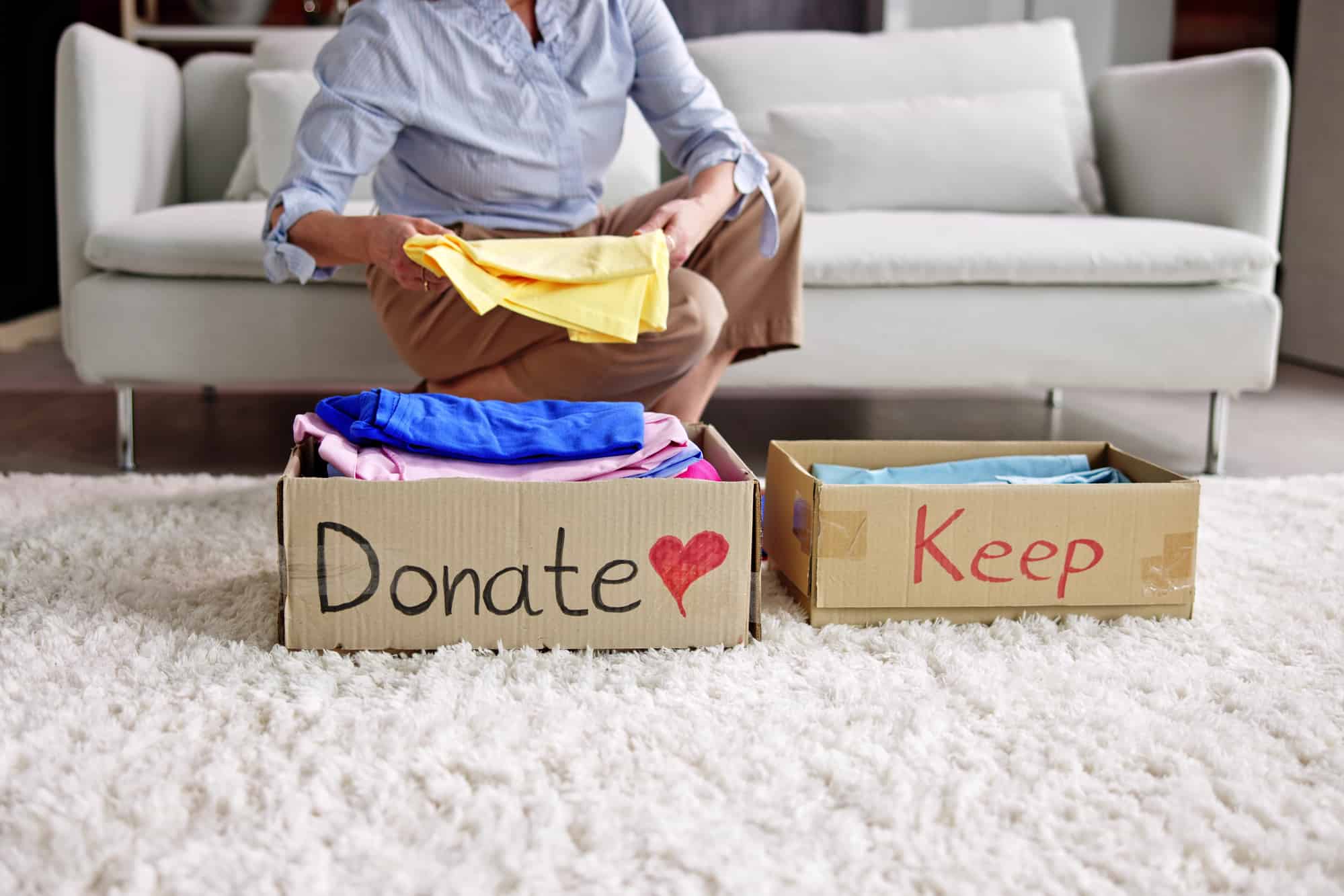How to Declutter Your Home: 5 Essential Steps to Have More Organized Home
If your home is feeling cluttered and disorganized, it can be overwhelming to know where to start. Read the article and will find out how you can create a more organized and tidy living space.
Why Do Decluttering
A cluttered home can cause stress and anxiety, making it difficult to relax and focus on important tasks. In fact having cluttered homes can also induce a cortisol response, negatively impacting mental and physical health. In addition, clutter can make it difficult to find what you need when you need it, leading to frustration and wasted time.
Clutter can have a significant impact on our mental health. Furthermore, clutter can also affect our ability to focus and make decisions. When we are surrounded by clutter, our brains are constantly processing the visual information, making it harder to concentrate on the task at hand. This can lead to decreased productivity and increased stress.
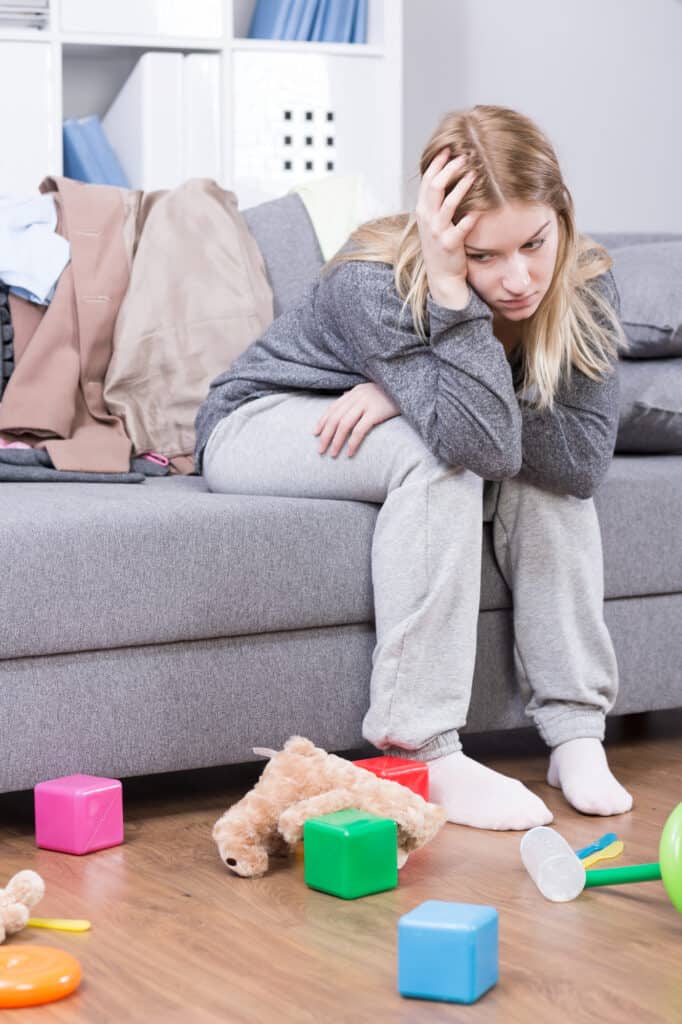
By decluttering your home, you can create a more peaceful and organized living space that supports your mental and physical well-being.
Personal Background
I had to move several times, from one house to another and even from one country to another. I lived in tiny apartments and, obviously, I couldn’t bring all my belongings with me, so I had to declutter and choose only the things I really needed and loved.
But when my daughter was born, decluttering took on a new meaning. Because we had no relatives nearby and no help, my husband was working all the time, so I had to take care of my daughter and do all the chores at the same time. I quickly became overwhelmed, the amount of random stuff we had at home created a cause of stress for me. Plus as my daughter grew into a toddler, she started to create a mess at home, throwing toys and just household items.
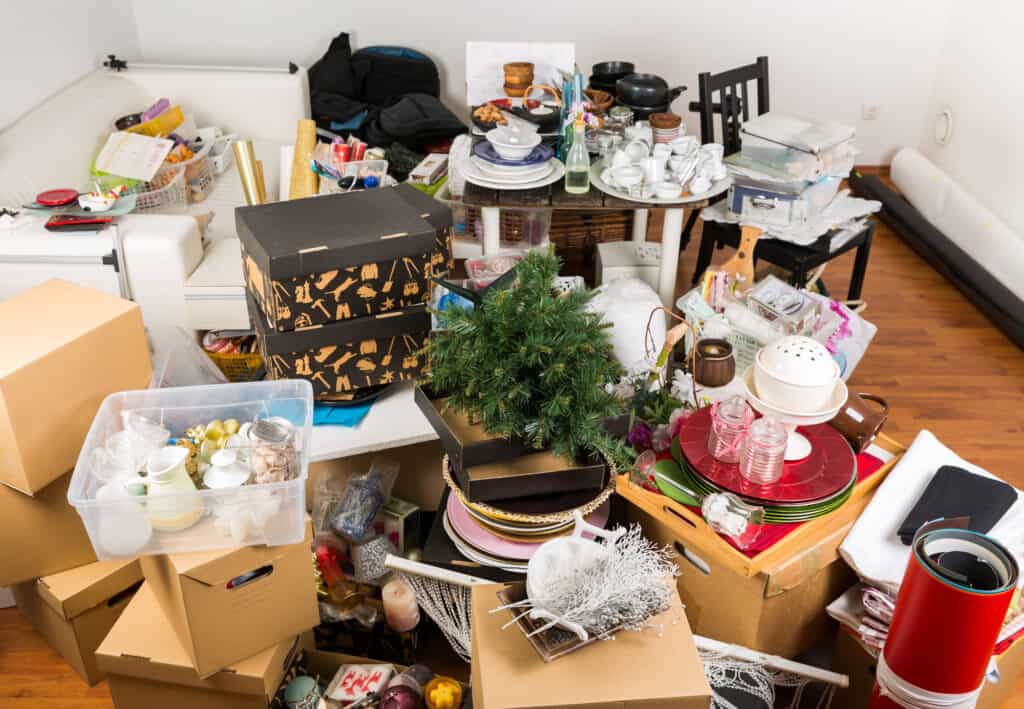
Decluttering became a lifesaving necessity. After all, the fewer things there are to take care of, the more free time I have, and there’s less stress about something being out of order in the apartment, as everything has its designated space and is easy to put away.
Recently I confirmed my theory that I should have only things that we use after I took a backpack from storage that I hadn’t used for about 2-3 years and it started to fall apart. So, basically, if I had passed it on to someone years ago, it would have served well over the years, but now it’s unusable and will just have to be thrown away.
Decluttering can be a daunting task, but it’s worth it in the end. You’ll have more free time, less stress, and a home that feels more peaceful and organized. So, if you’re feeling overwhelmed by clutter, take a deep breath and start small. You’ll be surprised at how much you can accomplish in just a few hours.
I have created an exclusive visual chart, crafted just for you! Simplify your decluttering journey with this handy tool and transform your space into an oasis of calm.
Grab your FREE copy of Decluttering Chart now and start your path to a more organized, serene home!
Grab your FREE copy of Decluttering Chart now and start your path to a more organized, serene home!
After decluttering many times throughout my life I came up with just 5 fundamental steps, how to make this process effective, short in time, and have no regrets afterward.
5 Fundamental Steps Of Decluttering
Decluttering your home can be overwhelming, but it doesn’t have to be. By following these 5 core rules, you can make the process of decluttering your home easier and less stressful.
1. Make a Decluttering Plan
Decluttering your home can be overwhelming and stressful, but with a good plan, it can be more manageable. Here are some steps to help you create a decluttering plan:
Decide which area have to be decluttered
The first step in creating a decluttering plan is to decide which areas of your home you want to declutter. Don’t try to declutter your entire home in one day. This could be a specific room, a closet, or even just a drawer. Once you have identified the areas that need decluttering, you can move on to the next step.
Prioritize what must be decluttered prior to others
The next step is to prioritize which areas need to be decluttered first. This could be based on the level of clutter, the importance of the area, or your personal preference. For example, you might want to start with the area that causes you the most stress or the one that you use the most.
Set a day and amount of hours you want to spend decluttering for every area in your house and stick to the plan
Once you have decided which areas to declutter and in which order, it’s time to set a schedule. Determine how much time you can realistically dedicate to decluttering each day or week, and then set aside that time in your calendar. It’s important to stick to your schedule to ensure that you make progress and avoid getting overwhelmed.
Set deadlines when you want to finish with decluttering
Finally, set deadlines for when you want to finish decluttering each area. This will help you stay motivated and focused on your goal. Be realistic with your deadlines and adjust them if necessary. Remember, the goal is to create a decluttered and organized home that works for you, so take the time you need to achieve that.
2. Eliminate Guilt and Regret
Decluttering your home can be a daunting task, especially if you’re worried about making the wrong decision or getting rid of something you might later regret. Here are some tips to help you eliminate guilt and regret when decluttering your home.
How to decide if you can get rid of the thing or not?
The first step to decluttering without guilt is to determine whether you really need the item or not. Ask yourself if the item is something that you use regularly or if it has sentimental value. If it’s something that you haven’t used in a while and don’t see yourself using in the future, it’s probably time to get rid of it.
No-brainer things to get rid of
Remember: organized clutter is still clutter! There are some things that are easy to get rid of without any hesitation. These include items that are broken (and can’t be repaired), expired, or no longer serve their purpose. For example, old magazines, expired medications, and broken appliances are all things that can be thrown away without any guilt.
What is sunk costs and how not to feel guilty about it
Sunk costs refer to the money or time that you’ve already invested in an item. It’s easy to feel guilty about getting rid of something that you’ve spent a lot of money on, but it’s important to remember that the money is already gone. Instead, focus on the present and whether the item is still useful or adds value to your life.
What questions you should ask yourself about things you consider to declutter
When deciding whether to keep or get rid of an item, ask yourself and your household members the following questions:
Answer honestly to these questions and consider your response to each of them. It will help you understand if you are ready to let those items go or not.
How to deal with sentimental items?
Sentimental items can be some of the hardest things to get rid of when decluttering. To make the process easier, take a photo of the item before getting rid of it. This way, you’ll still have the memory without the physical clutter. You can also consider passing sentimental items down to family members who will appreciate them.
But don’t be harsh on yourself, if you want to keep those newborn clothes or gifts from your great-grandma, who died. Сreate a memory box! Organize your sentimental items in a way that they are celebrated and cherished, and not only left in the attic for years.

What about the stuff you need to keep just in case?
There are some items that you might need to keep just in case, such as important documents or emergency supplies. To keep these items organized, designate a specific place for them in your home. This way, you’ll know exactly where to find them if you need them.
How to not regret after you get rid of the things
To avoid regretting getting rid of something, ask yourself if you’ll really miss it. If the answer is no, then you made the right decision. It’s also important to remember that getting rid of things can be liberating and make space for new things in your life.
By following these tips, you can declutter your home without feeling guilty or regretful. Remember to take it one step at a time and focus on the present and future rather than the past.
3. Sorting and Handling
When you start decluttering the area you have to sort items into categories:
To Keep
When deciding what to keep, ask yourself if the item serves a purpose or brings you joy. If the answer is yes, then keep it. In the meantime you have to decide whether to put it back where it was or relocate at home (find a new place to store it).
To Sell
If you have items in good condition that you no longer need, consider selling them. You can use online marketplaces like eBay, Craigslist, or Facebook Marketplace to sell your items.
When pricing your items, be realistic and research similar items to get an idea of their value. Remember, the goal is to declutter your home, so don’t be afraid to let go of items that aren’t selling.
To Donate
Donating items is a great way to give back to your community and help those in need. Many organizations accept donations, including Goodwill, the Salvation Army, and local shelters.
Before donating, make sure the items are in good condition and can be used by someone else. You can also pass some items, such as toys and clothes that are still in good condition to your family members or friends.
For example, we got a lot of baby clothes from our friends, because they had a baby just one year before us. And after our daughter outgrew them, we passed some to the other family. Of course this way doesn’t work for all the items and some people prefer not to wear used clothes.
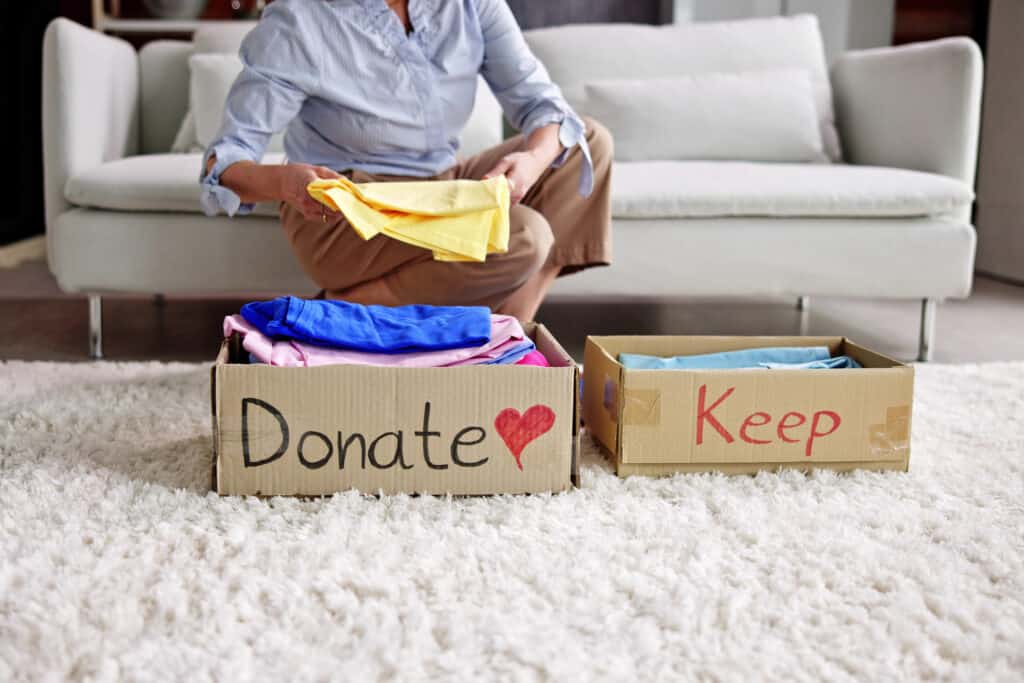
To Trash
Sometimes, items are beyond repair or not suitable for donation or sale. In these cases, it’s best to throw them away.
Be mindful of what you’re throwing away and consider recycling or repurposing items if possible. This way, you can reduce waste and minimize your environmental impact.
4. Set a Stopping Point
I know, decluttering can look like a never-ending task. But you get to decide when you want to stop. You don’t have to get rid of everything and live a minimalist lifestyle if that’s not what you want. Instead, focus on being satisfied with the results of your decluttering efforts.
It’s important to remember that you can always come back to the decluttering process whenever you feel the need, even if it’s in a year or more. Setting a stopping point for yourself can help you avoid feeling overwhelmed and give you a sense of accomplishment.
One way to set a stopping point is to break the decluttering process into manageable chunks. For example, you could declutter one room at a time or focus on one category of items, such as clothing or books.
Another way to set a stopping point is to give yourself a deadline. Decide that you will declutter for a certain amount of time, such as a week or a month, and then take a break. This can help you avoid burnout and give you time to enjoy the results of your hard work.
Remember, the goal of decluttering is to create a home that feels comfortable and organized to you. Don’t feel pressured to get rid of everything or achieve a certain level of minimalism. Focus on what works for you and your lifestyle, and set a stopping point that feels right.
5. Maintenance: Tidy Home Without Much Effort
After you have done deep decluttering you feel fresh breath and relief: your home looks pretty. Let’s see what to do to keep it that way.
Assign a designated place for everything you are keeping
One of the most effective ways to maintain a tidy home is to assign a designated place for everything you are keeping. This means that every item in your home should have a specific place where it belongs. By doing this, you can easily find what you need when you need it, and you can avoid clutter from accumulating in your home.
Clear and practical storage organization
Clear and practical storage organization is key to maintaining a tidy home. Use bins, baskets, labels, drawer dividers, and other storage solutions to keep your items organized and easy to find. By using these storage solutions, you can maximize your space and keep your home clutter-free.

One In, One Out
A good rule of thumb to prevent clutter from building up again is to follow the one in, one out rule. For every new item you bring into your home, get rid of an old one. This will help you maintain a clutter-free home in the long run.
Maintain your spaces
One of the most important habits to maintain a clutter-free home is to put things away when you’re done with them. This means that you should always return items to their designated place after using them. Make sure to teach your family members to do the same, so everyone in your household can help maintain a tidy home.
Frequency of decluttering
For some, decluttering is an annual event, while others prefer to tackle it with the changing seasons, before holidays like Christmas, or as spring emerges. Your decluttering journey is uniquely yours.
Yet, it’s crucial to be mindful of what you purchase and bring into your home to prevent clutter from accumulating. This can be challenging, especially with young children who constantly receive toys and quickly outgrow their clothes.
Setting boundaries is essential; consider creating a gift list for your child’s birthday guests to ensure they bring only meaningful items. Instead of exchanging trivial gifts at Christmas, why not save that money for a fun family outing to an amusement park or a special meal out?
Create a Tidying Up System
Once you’ve decluttered your home, create a system to keep it clean and organized. Check out our article about How to Keep Your House Clean and Tidy with Kids for more information on this topic.
How Decluttering Influences You and Your Family?
Decluttering your home can have a significant impact on your life and your family. It can help you feel more organized and less stressed, and it can also create more space and improve the overall appearance of your home.
By decluttering, you can also teach your family the importance of organization and maintaining a clean living space. It can be a great opportunity to involve your children in the process and teach them valuable life skills.
According to a study by the National Association of Professional Organizers, the average American spends one year of their life looking for lost or misplaced items. By decluttering and organizing your home, you can save time and reduce frustration.
Additionally, decluttering can have financial benefits. By selling unwanted items or simply reducing your overall consumption, you can save money and reduce your environmental impact.
Remember, decluttering is not a one-time event. It is an ongoing process that requires consistent effort and maintenance. By implementing some of the strategies discussed in this article, you can create a more organized and stress-free living space for you and your family.
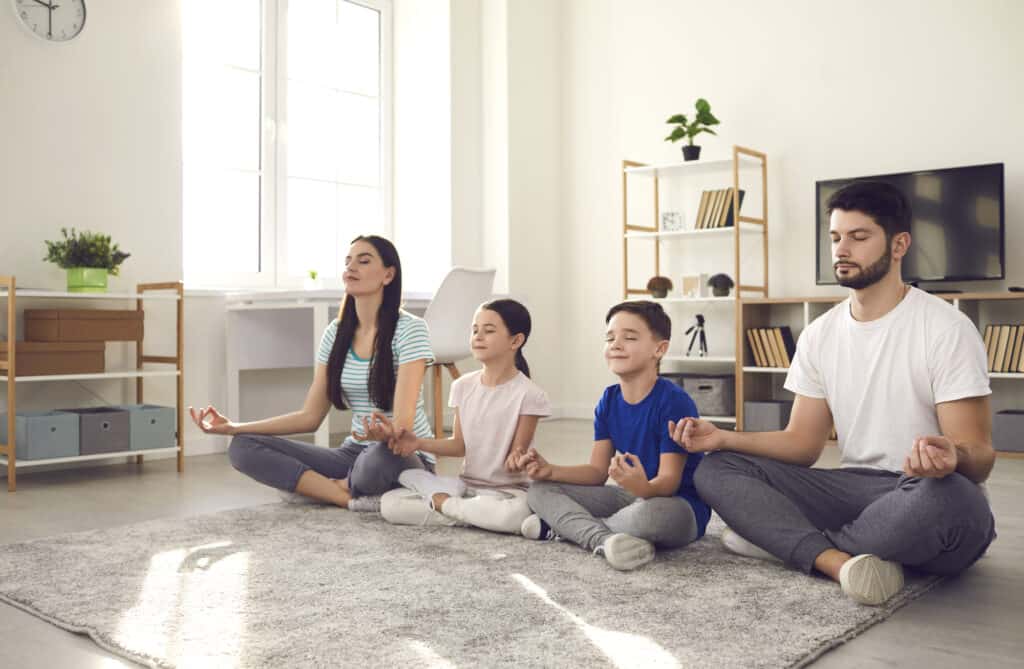
Subscribe to Babyhood And Beyond!
Get updates on the latest posts and more from Babyhood And Beyond straight to your inbox

